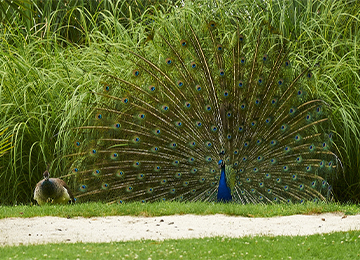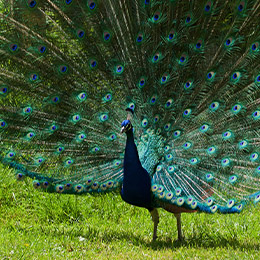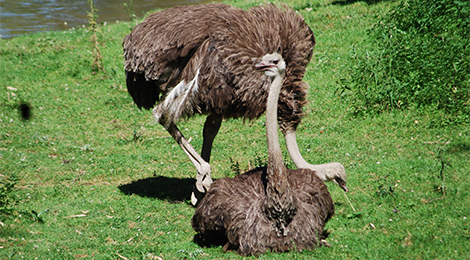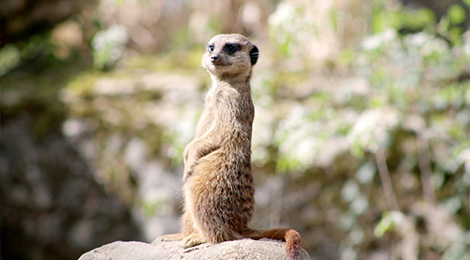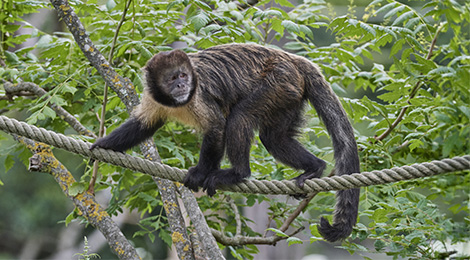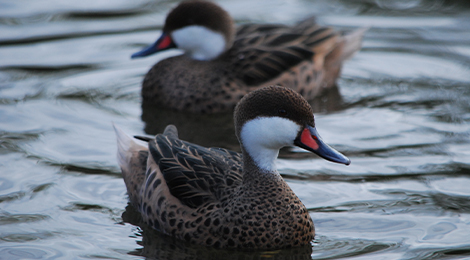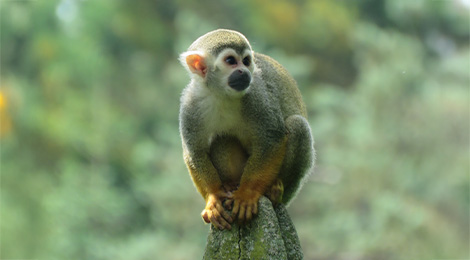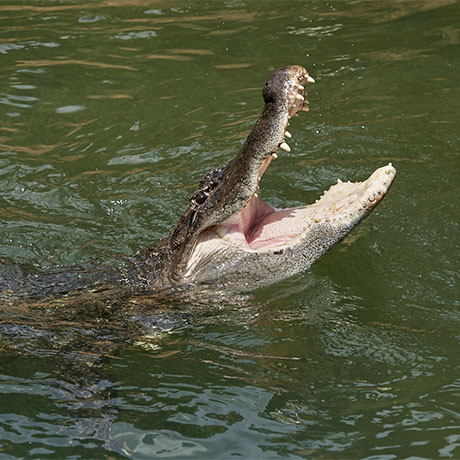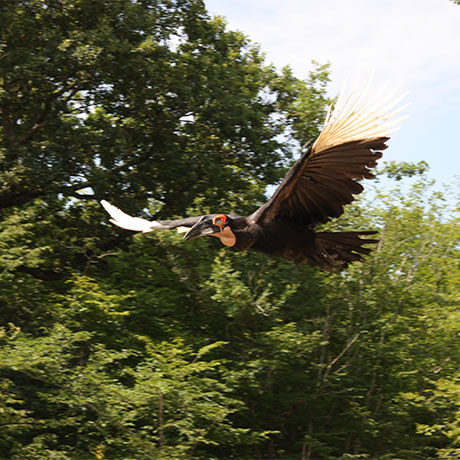Famous for its spectacular tail
The blue peacock is famous for the wheel that the male performs to seduce his female. If the male is a brilliant blue and green, the female is duller at nesting inconspicuously. Both have a very typical feather crest on their heads.
The blue peacock, often in groups and sometimes isolated, forages on the ground during the day and will roost in its favorite "dormitory" tree to spend the night safe from predators. He is a sedentary bird and his life is well regulated. It forages in the same areas every day, sleeps and displays in the same places.
The blue peacock is very common in captivity. There are also many mutations. On the other hand, in the natural environment, its numbers are in constant decline because of the loss of its habitat and the natural predation of tigers and panthers to which must be added that of domestic dogs on the outskirts of villages.
The blue peacock is native to Pakistan, India, Sri Lanka and Bangladesh where it has almost disappeared. It is now high in many countries, the United States, Africa and Europe.
-
HabitatForest, riverbanks and clearings in south India.
-
Food
Vegetation, seeds, fruit, insects and small invertebrates.

It emits a well-known characteristic call. In its natural environment, this is used to warn other animals of the presence of a tiger or leopard.
A zoological reserve populated by Asian elephants, giraffes, lions, tigers, hippos, chimpanzees, gibbons, wolves, ostriches ... Animals evolving in their reconstituted natural environment, to discover as a family.
All animals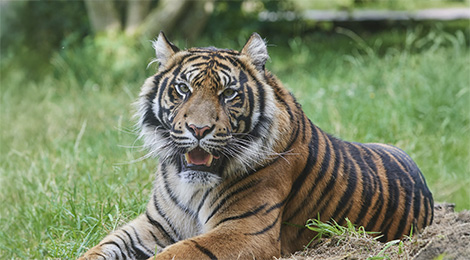
-
![]() Sumatran tiger Discover animal
Sumatran tiger Discover animal -
![]() Ostrich Discover animal
Ostrich Discover animal -
![Un suricate regardant la caméra au zoo Le PAL]() Meerkat Discover animal
Meerkat Discover animal -
![]() Golden-bellied capuchin Discover animal
Golden-bellied capuchin Discover animal -
![]() Bahama pintail Discover animal
Bahama pintail Discover animal -
![]() Squirrel monkey Discover animal
Squirrel monkey Discover animal -
![les dents et la gueule d'un alligator du Mississipi au parc animalier Le PAL]() Alligators Park Discover animal
Alligators Park Discover animal -
![Calao terrestre de Leadbeater en plein vol au zoo Le PAL]() Southern ground hornbill Discover animal
Southern ground hornbill Discover animal



